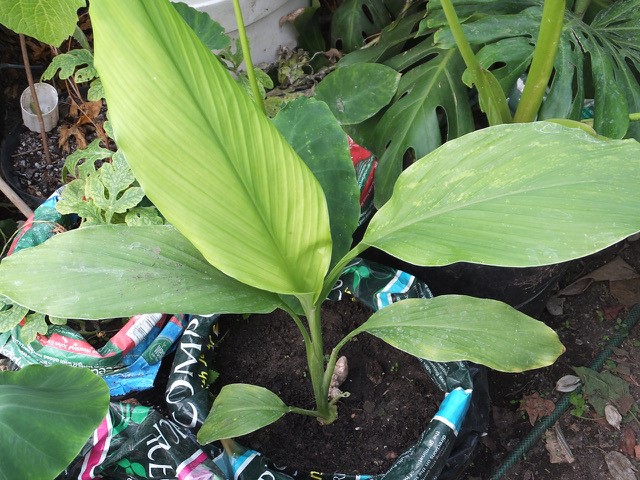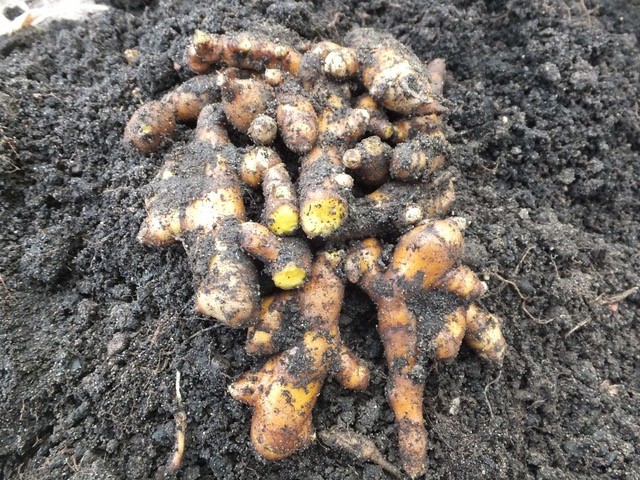
Much vaunted for its health value and expensive to purchase Turmeric is the swollen root of Curcuma longa, a decorative greenhouse plant with large leaves. This flavourful colouring spice is grown in huge quantities in Asian countries for many dishes and it’s essential for Indian curries. Used since Classical times as the dried root or powder the plant itself was not ‘introduced’ till the mid Eighteenth Century when it was soon growing in Hothouses. As desired more for the red blooms than the spice it was rapidly replaced by more floriferous species, indeed by 1868 Paxton lists two and a half dozen!

Very closely related to Ginger its ancient companion spice Turmeric grows similarly but distinctively differently. Ginger grows a ‘hand’ with a few fat almost knobbly fingers and vertical pointed leaves. Turmeric follows the same pattern but with numerous tiny hands each smaller and fewer leaves, larger, ovate and curved. With both plants the roots are harvested and used young and fresh, fully mature and also dried.
The seed is seldom available if ever but pieces of fresh root sold for consumption can be rooted if not damaged or dried out, ideally with budding bumps. Start in late winter / early spring, barely cover a root atop moist free draining compost in a deep pot kept in a warm propagator. This will coax leaves and rooting and from then on the plants just need moving on into larger pots as the season progresses.

Turmeric needs a warm light spot, looks good and is happy stood amongst tubs of other greenhouse crops such as Ginger and Colocasia. Light feeding with watering helps improve yields but too much of either may make the roots grow larger but ‘soft’. The crop is usually lifted by early winter as the leaves wither away, the compost should have been dried off, then roots can be extricated, almost sieved out. When young the rhizomes are pale but with maturity become that beautifully reddish yellow.
If you want to grow more for flowers and not for the roots Turmeric is slow and unreliable to bloom but you will find more than a dozen better species and varieties are available all selected for their beauty.


